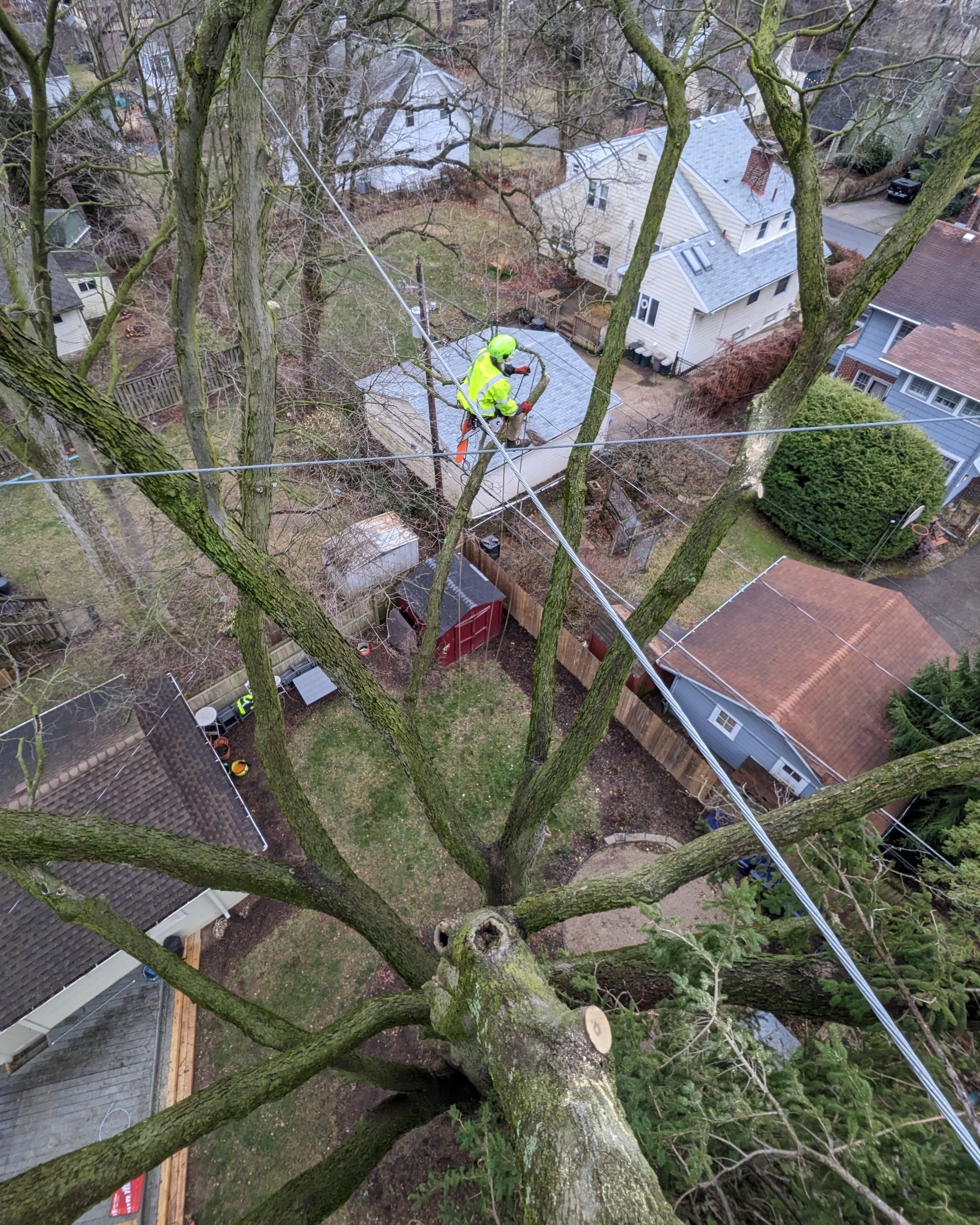When you think of anatomy, what comes to mind? I think of humans specifically, and learning about the wonderful bone and organ systems in our body in middle school science class. You may think about the anatomy of various animals and how there is an abundance of variety depending on where you are in the world, but how often do we consider the anatomy of trees?
Surely trees are just trees, right? They grow without us even considering how or why they may grow in the ways that they do. We may be blissfully unaware of their anatomy or structure until we are confronted by the reality of a winter ice storm or a summer thunderstorm. Oftentimes, we may find trees with less-than-desirable structure having taken damage after these events, or worse, having caused property damage along with their own demise!
Two examples of trees with codominant stems
You may be asking yourself, what does poor tree anatomy look like? The answer to that question deserves its own article, however a majority of tree structural problems can be narrowed down to codominance, and that is what I want to address in this article. Codominance is when a tree has two or more similarly-sized trunks emerging from the same location and forming a distinct “V” shaped union. There are varying reasons as to why a tree may be codominant, and some species have natural habits that lend themselves to becoming codominant.
Visual representation of codominance by Jacob Nau
To give you a visual representation of codominance, bring your elbows together in front of your chest, with your palms facing you. Now, spread your wrists apart, keeping your elbows together to form a distinctive V shape. Opening up your fingers you can picture the crown of a tree. Seems like an awkward, weak position to be in, right? Now, imagine adding the weight of tree branches, leaves, rain and 15-50 mph wind gusts, etc. (trees can go through a lot!), while you strain to keep your elbows together, and you can begin to imagine why a codominant union (V-shaped union) in a tree is not anatomically advantageous.
So what can be done to fix, or even prevent, codominant structure in a tree? The answer to this question largely depends on the age of the tree. If your tree is young and generally under the age of approximately 20 years, then a structural pruning plan can be performed to help guide the tree out of its codominance over the next 5-10 years.
However, if your tree is large and mature, there are a number of services that can be used to help support your tree's anatomy. Those services include:
End-Weight Reductions
Reduce the length of long, lateral branches in the tree’s crown to reduce the weight and levering effect on the codominant union below. Typically performed before or with a cabling support system.
Jacob Nau performing an end-weight reduction on a tree.
Cabling Support System
Install a single, or multiple, static steel cable(s), or dynamic rope cable(s) in the tree’s crown to support the codominant union below.
A static cabling system in a Hackberry tree in Clintonville, Ohio.
Through-Brace Support System
Install a system of steel threaded rods into the codominant union to strengthen that area of the trunk. This is usually performed in-tandem with a cabling support system.
Top Left: Final result of a brace rod installation. Top Right: Close-up of a singular, installed brace rod. Bottom Left: Side profile of two installed brace rods. Bottom Right: A brace rod about to be inserted.
Propping Support System
Install a single, or multiple, semi-permanent wood prop(s) to support a lower, large lateral limb to ease the strain on a codominant union. This is a more unique way to support the tree's anatomy, specifically for low, long, and lateral limbs that are difficult to support with a cabling system.
A tree prop supporting a limb from the Angel Oak tree in South Carolina.
All of the services listed above, including the young-tree structural pruning, are services we perform at Russell Tree Experts. I highly encourage you to look out your window and consider your tree's anatomy! Can they be supported? Is it time for an anatomical upgrade? If so, give our local office a call at (614) 895-7000 and we will happily connect you with one of our Regional Managers to assist you in determining the best course of action for your trees!
Sincerely,
Jacob Nau I Training and Development Manager, Russell Tree Experts
Jacob is an ISA certified arborist and joined RTE in 2018. He has been involved in tree care for over 10 years. He enjoys climbing trees both recreationally and professionally and in his free time, he loves spending time with his family.









